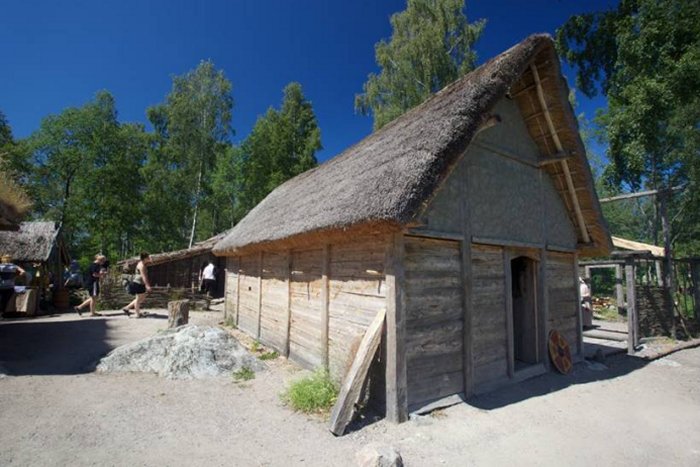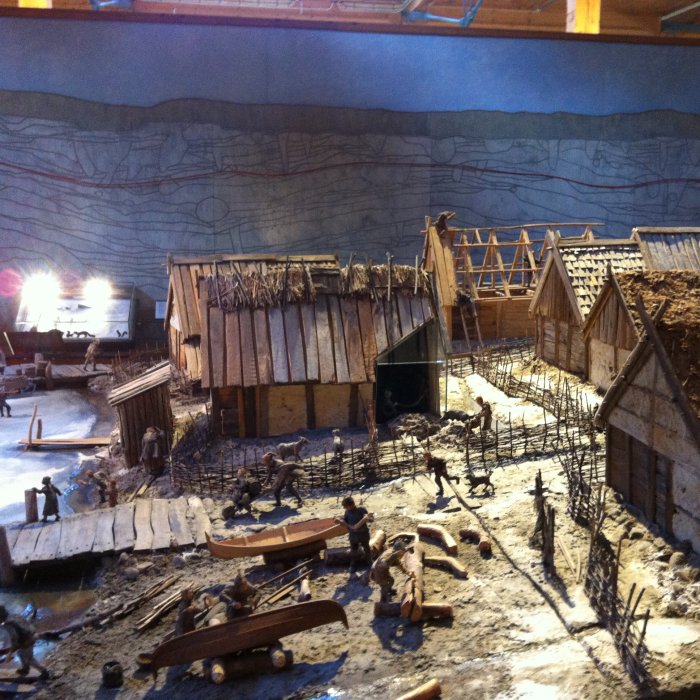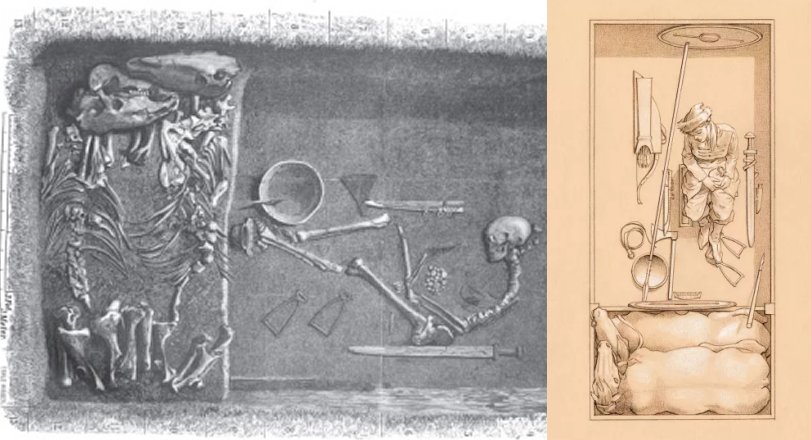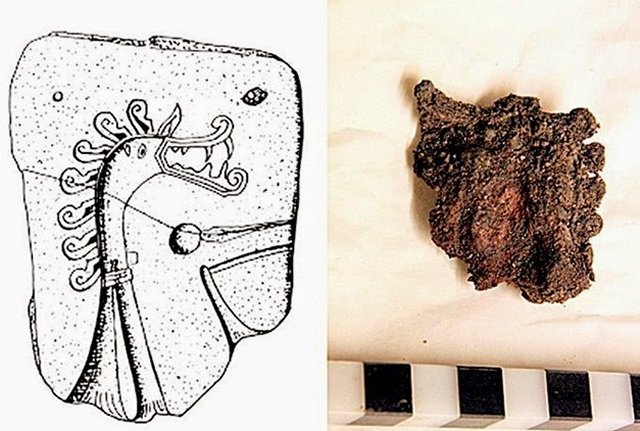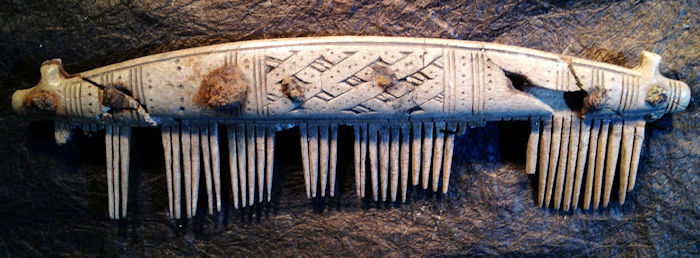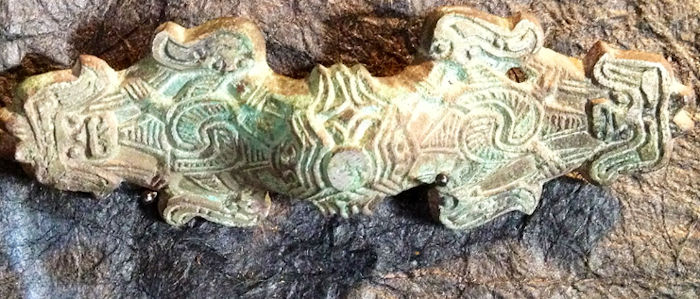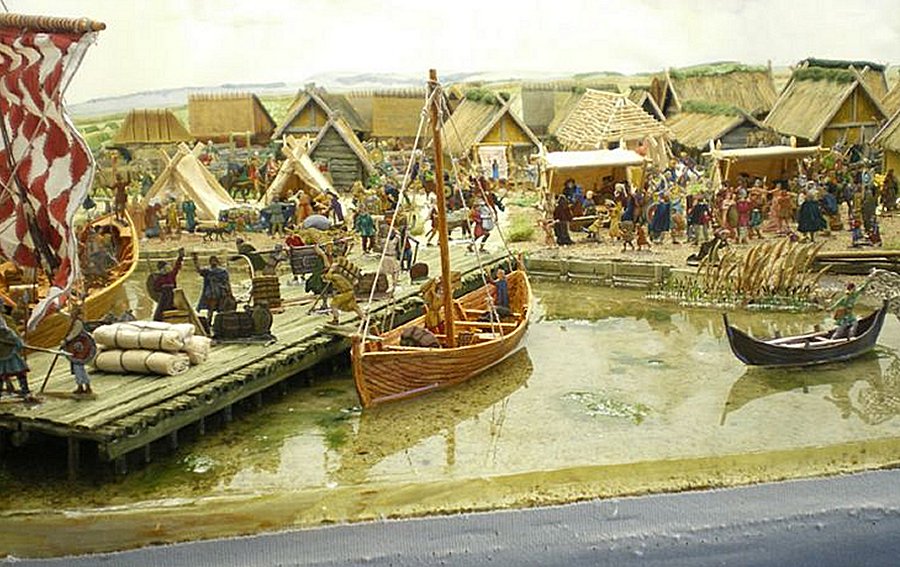Birka Artifacts Shed Light On Vikings’ Daily Life
Ellen Lloyd - AncientPages.com - Ancient artifacts discovered at Birka offer valuable information about Vikings’ daily life.
By examining several of the objects unearthed at Birka, one can get a unique glimpse into the beliefs, practices, and traditions of the Vikings.
Birka is located on the small island of Björkö (‘Birch Island’) on Lake Mälaren, Ekerö, Sweden.
A reconstructed Viking house at Birka. Credit: Claes Helander
Today, the place is not as famous as it once was in ancient times. During the Viking Age, Birka was a major trading center and an important trade hub for goods from Scandinavia, Central and Eastern Europe, and the Orient.
People representing many ancient cultures visited Birka, where they sold and bought goods. Birka was also the site of the first Christian gatherings in Sweden, organized in 831 by Saint Ansgar, a nobleman.
A reconstruction of Birka.
Archaeologists excavating at Birka have made many interesting finds that challenge historians’ understanding of the Viking society. For example, it was long assumed that Viking women couldn’t be warriors. This is wrong, however. During the Viking Age, females took part in battles, and women could become great warriors. This was confirmed when scientists found an intriguing grave at Birka. Inside the grave, researchers found a skeleton, various weapons, including a sword and armor-breaking arrows, a horse, and a board game.
Archaeologists thought these were the remains of a male Viking warrior of great military importance. Later, a comprehensive DNA study revealed the Birka warrior was in fact a woman. This discovery also suggests that mythical female warriors known as Shield-Maidens may have been the basis for the mythical ‘Valkyries.’
Left: This is how the tomb at Birka possibly looked like. The grave plan was created by Evald Hansen and based on the original plan from grave Bj 581 from Hjalmar Stolpe's excavations at Birka in the late 1800s (Stolpe 1889). Right: The drawing is a reconstruction of how the grave with the woman originally may have looked. The illustration was made by Þórhallur Þráinsson © Neil Price
Like many ancient civilizations, Vikings used several symbols that had special significance. Viking symbols were based on Norse mythology. Symbols played a vital role in Viking society and were used to represent their gods, beliefs, and myths.
One of the most important Viking symbols was the dragon. Many Viking ships were equipped with carved dragonheads on top of the stem, while the stern often was shaped like a dragon's tail.
The discovery of the dragon's head is one of the most exciting finds in recent years.
In Birka, archaeologists found evidence that the dragon played a vital role in the daily life of the Vikings. While excavating in the ancient town, scientists came across a little dragon's head that had been on an ancient costume needle, but the needle had long disintegrated.
Vikings traded with many ancient civilizations, and they were curious about distant and exotic cultures' beliefs and traditions. While examining a ninth-century ring from Birka, scientists concluded the artifact came directly from the Islamic civilization. The ring includes an inset of colored glass engraved with ancient Arabic script.
An inscription on the glass inset reads either “for Allah” or “to Allah” in an ancient Arabic script.
Veronica Björkman, who works as a destination chef and guide in Birka, says people who lived in this ancient city were similar to modern people. These individuals could be happy or sad, and they loved their children, but of course, there were some differences, and life for youngsters was much tougher.
Decorated comb. Credit: Birka site museum.
Cast copper alloy brooch. Credit: Birka site museum
Like most children of the ancient world, Viking children did not have much time to enjoy their childhood. Work, learning, duties, and responsibility started at a very early age, and there was not much time for playing games, but this does not mean it was boring to be a Viking child. It was simply different than it is today. Viking parents loved their children so much that they buried them with extremely sharp knives. These knives have been debated, but some scholars suggest they were intended as tools for the afterlife.
Björkman also point out that the “Allah” ring discovered in Birka is also one of several proofs that trade and meetings with the Arab world occurred.
The magnificent ancient jewelry discovered at the site offers evidence Vikings were excellent craftsmen. Ancient Viking jewelry was in most cases, made of silver or bronze and sometimes gold. Many Viking ornaments featured images of animals, particularly twisting shapes of snakes.
Some years ago, using ground-penetrating radar, scientists made another fascinating discovery at Birka. High resolution geophysical surveys revealed a major Viking period hall on the site, with a length of around 40 meters. Based on the land upheaval, the area of the Viking hall can be dated to sometime after 810 AD. According to archaeologists, the Viking mason was owned by a man called Herigar, who was one of the King’s representatives. Herigar is mentioned in several historical sources.
Sometimes called Sweden’s first city, Birka lost its significance when Christianity spread across the country. The town was abandoned and ceased to exist as a manufacturing and commercial center around 960 A.D. but the island of Björkö was continuously inhabited. Another town, Sigtuna, located further north in Stockholm county became a replacement for Birka’s trade activities.
There are approximately 4,000 ancient graves in Birka, and still much to explore. Perhaps, archaeologists will find more intriguing ancient artifacts that will give us an even better understanding of Viking history.
Hedeby and Kaupang are other highly significant ancient trading centers where valuable Viking artifacts have been unearthed.
Written by Ellen Lloyd – AncientPages.com
Updated on September 23, 2022
Copyright © AncientPages.com All rights reserved. This material may not be published, broadcast, rewritten or redistributed in whole or part without the express written permission of AncientPages.com
More From Ancient Pages
-
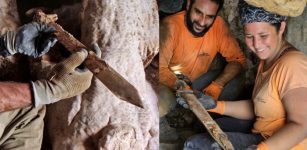 Four Rare And Incredibly Well-Preserved 1,900-Year-Old Roman Swords Found In Judean Desert
Archaeology | Sep 6, 2023
Four Rare And Incredibly Well-Preserved 1,900-Year-Old Roman Swords Found In Judean Desert
Archaeology | Sep 6, 2023 -
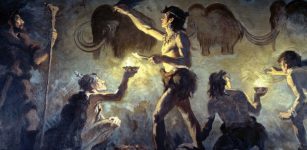 Solutrean People: Were First Americans European Stone Age People?
Civilizations | Feb 23, 2018
Solutrean People: Were First Americans European Stone Age People?
Civilizations | Feb 23, 2018 -
 Ancestral Home Of All Humans Revealed Through World’s Largest Genome Reconstruction Of Our Ancestors
Archaeology | Jan 3, 2023
Ancestral Home Of All Humans Revealed Through World’s Largest Genome Reconstruction Of Our Ancestors
Archaeology | Jan 3, 2023 -
 Hidden Text Discovered Inside Ancient Scroll
Archaeology | Oct 5, 2018
Hidden Text Discovered Inside Ancient Scroll
Archaeology | Oct 5, 2018 -
 Neanderthals Were Morning People – A New Study Says
Biology | Dec 14, 2023
Neanderthals Were Morning People – A New Study Says
Biology | Dec 14, 2023 -
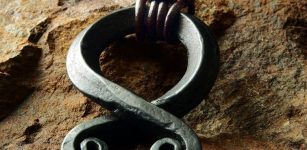 Troll Cross – Protection Symbol Believed To Ward Off Evil Powers
Ancient Symbols | May 12, 2018
Troll Cross – Protection Symbol Believed To Ward Off Evil Powers
Ancient Symbols | May 12, 2018 -
 Ancient Maps Reveal What Will Happen With Our Climate In The Future – Scientists Say
Archaeology | Oct 12, 2022
Ancient Maps Reveal What Will Happen With Our Climate In The Future – Scientists Say
Archaeology | Oct 12, 2022 -
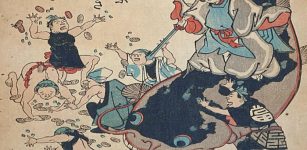 Odd Monster Namazu ‘Earth Shaker’ Was First Feared By People And Later Worshiped As Luminous Deity Repairing The World
Featured Stories | Feb 3, 2024
Odd Monster Namazu ‘Earth Shaker’ Was First Feared By People And Later Worshiped As Luminous Deity Repairing The World
Featured Stories | Feb 3, 2024 -
 Riddle Of The Ancient Sarcophagus And Its Strange Properties – Can Science Solve This Mystery?
Ancient Mysteries | Nov 7, 2019
Riddle Of The Ancient Sarcophagus And Its Strange Properties – Can Science Solve This Mystery?
Ancient Mysteries | Nov 7, 2019 -
 Secrets Behind 2,000-Year-Old Roman Water Management Revealed
Ancient Technology | Aug 4, 2023
Secrets Behind 2,000-Year-Old Roman Water Management Revealed
Ancient Technology | Aug 4, 2023 -
 Sacred Medicine Bundle With Relics Of The First Ancestors Or Given By The Gods
Ancient Traditions And Customs | Sep 15, 2016
Sacred Medicine Bundle With Relics Of The First Ancestors Or Given By The Gods
Ancient Traditions And Customs | Sep 15, 2016 -
 Ancient Maya: Wealth Inequality And Despotism That Governed The Society
Archaeology | Mar 26, 2021
Ancient Maya: Wealth Inequality And Despotism That Governed The Society
Archaeology | Mar 26, 2021 -
 Ancient Maya Reservoirs Can Solve Today’s Water Crises – Scientists Say
Archaeology | Oct 10, 2023
Ancient Maya Reservoirs Can Solve Today’s Water Crises – Scientists Say
Archaeology | Oct 10, 2023 -
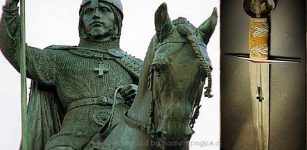 Prince Wenceslaus Of Bohemia Murdered On Order Of His Own Brother
Featured Stories | Nov 19, 2019
Prince Wenceslaus Of Bohemia Murdered On Order Of His Own Brother
Featured Stories | Nov 19, 2019 -
 Mississippi’s Mounds Built By The Indigenous People Are Incredibly Important Landforms – Scientists Say
Archaeology | Jul 25, 2023
Mississippi’s Mounds Built By The Indigenous People Are Incredibly Important Landforms – Scientists Say
Archaeology | Jul 25, 2023 -
 The Anglo-Saxon Migration: New Insights From Genetics
Archaeology | Sep 21, 2022
The Anglo-Saxon Migration: New Insights From Genetics
Archaeology | Sep 21, 2022 -
 Rainbow Was A Powerful Symbol In People’s Ancient Beliefs
Ancient Symbols | Jul 26, 2018
Rainbow Was A Powerful Symbol In People’s Ancient Beliefs
Ancient Symbols | Jul 26, 2018 -
 Stamp Suggests The Iconic Sutton Hoo Helmet Was Made In Denmark, Potentially Rewriting Early European History
Archaeology | Mar 28, 2025
Stamp Suggests The Iconic Sutton Hoo Helmet Was Made In Denmark, Potentially Rewriting Early European History
Archaeology | Mar 28, 2025 -
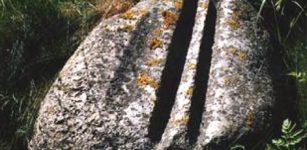 Mystery Of The Gotland Grooves – Ancient Astronomical Observatory?
Civilizations | May 11, 2016
Mystery Of The Gotland Grooves – Ancient Astronomical Observatory?
Civilizations | May 11, 2016 -
 Deformed Skulls And Clues Found In Ancient Cemetery In Hungary
Archaeology | May 1, 2020
Deformed Skulls And Clues Found In Ancient Cemetery In Hungary
Archaeology | May 1, 2020

